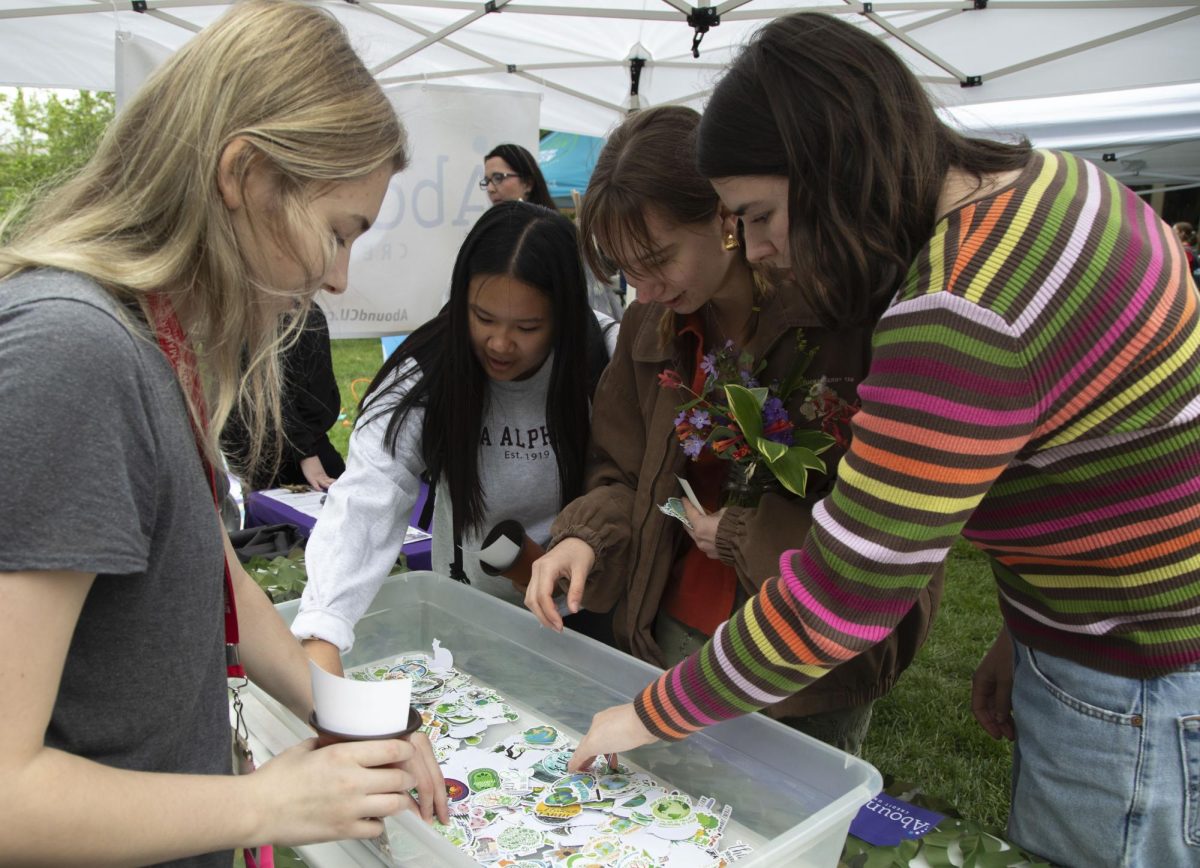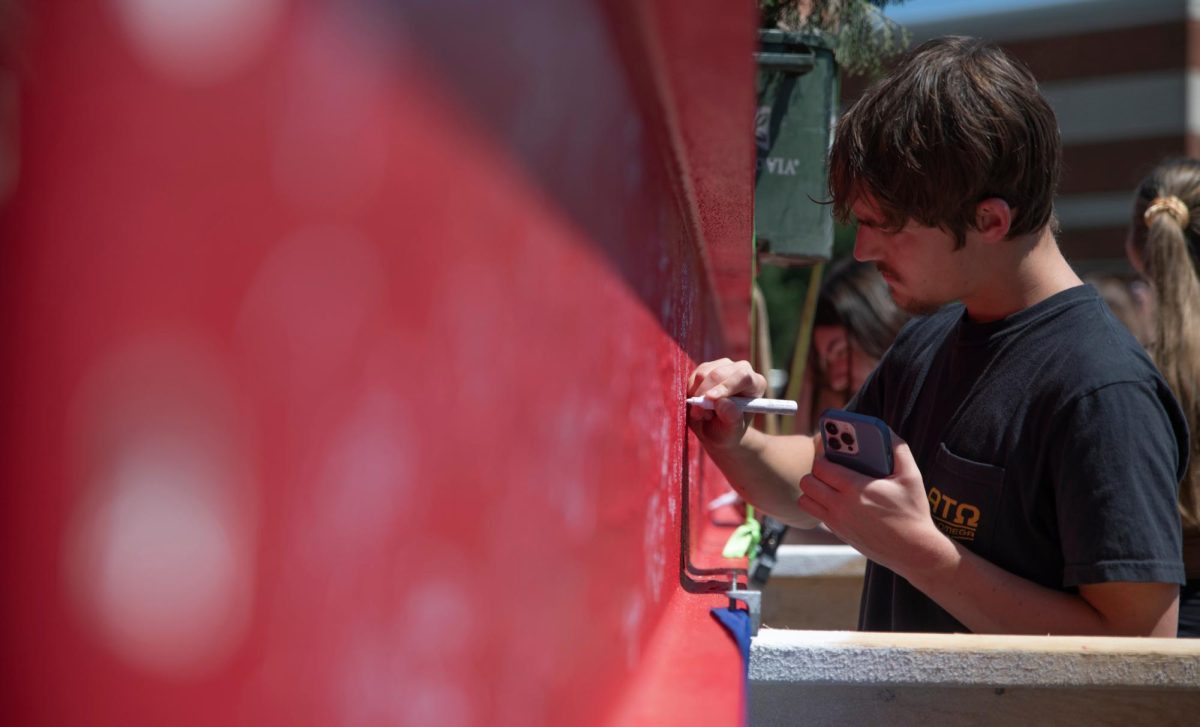Alumni decorate campus buildings with plants
November 12, 2002
Horticulturalists John and Karen Potter have turned lobbies, hallways and stairwells across campus into tropical winter wonderlands.
From mid-October until mid-April, the two alumni winter their alocasia plants indoors at Western.
“This is our contribution,” Karen Potter said. “We don’t have large amounts of money to give, so we decorate Western during the winter.”
This semester, the Potters are housing 322 alocasias in a dozen buildings at Western.
At the bottom of the Hill, the Potters scattered the plants through Tate Page Hall, the Academic Complex and Diddle Arena.
The plants are called elephant ears because of their big, heart-shaped leaves. Many stand more than eight feet tall.
“Some were over 10 feet tall,” John Potter said. “We trimmed them tremendously just to bring them in here because we couldn’t get them in the truck.”
Elephant ears line the front hallway in Thompson Complex and also ring Hardin Planetarium’s circular hallway.
Three plants push against the glass at Java City.
In the Environmental Sciences and Technology Building, alocasias decorate the foyer.
The Potters also turned glassed-in stairwell landings at Gordon Wilson Hall into alocasia terraces.
The heat, humidity and sunny, glassed-in lobbies and stairwells of campus buildings make ideal greenhouses for the plants.
“They like the tropics,” John Potter said. “That’s why here in Gordon Wilson they do just fine.”
The couple got permission to decorate campus interiors from Facilities Management last year.
They transplant alocasias from their two-acre farm on Cemetery Road into 18-inch-diameter plastic pots and haul them to their winter homes on campus.
“It took five Ryder trucks and a truck and trailer to get them up here,” Potter said. Transplanting and transporting the plants cost the couple hundreds of dollars.
“We don’t have an exact figure yet, but we’re looking for the long-term effect,” he said.
The plants not only survive, but actually thrive while they winter at Western. They’re sold at higher prices the next spring.
People pay $69 for a 3-foot alocasia and up to $222 for an 8-foot plant, Potter said.
LaGrange sophomore Samantha Ragland had no idea where the plants came from. She lives in McCormack Hall and wants to take an alocasia home with her.
“They just appeared all at once,” she said. “I want one for my dorm room.”
Bardstown senior Brandon Copeland, Student Government Association’s vice president of Administration, said he is grateful for the Potter’s alocasias.
“They lighten the environment and make it much more aesthetically appealing,” he said. “They’re kind of big, but otherwise they’re a nice touch.”
Not all students think so.
Turning campus interiors into tropical rain forests bothers Sally Potters, a sophomore from Connersville, Ind.
“Now, I guess, I’m used to them, but they’re just kind of annoying and in the way,” she said. “Maybe if they were smaller, it wouldn’t be as big of a deal.”
The Potter’s alocasias are heirlooms.
“The first plant came into my husband’s family in 1948 or ’49,” Karen Potter said.
The thousand alocasias they grew this year all descended from the family’s first plant.
The couple grew them in drip tubes on a vaulted, quarter-acre barn roof. The 8-foot alocasias spring from roots that sprout first into ugly, wrinkled, little cormlets.
“We call them Klingons, because only a mother could love something that ugly,” John Potter said.
Reach Dave Shinall at [email protected].



















![Students cheer for Senator at Large Jaden Marshall after being announced as the Intercultural Student Engagement Center Senator for the 24th Senate on Wednesday, April 17 in the Senate Chamber in DSU. Ive done everything in my power, Ive said it 100 times, to be for the students, Marshall said. So, not only to win, but to hear that reaction for me by the other students is just something that shows people actually care about me [and] really support me.](https://wkuherald.com/wp-content/uploads/2024/04/jadenmarshall-600x422.jpg)





